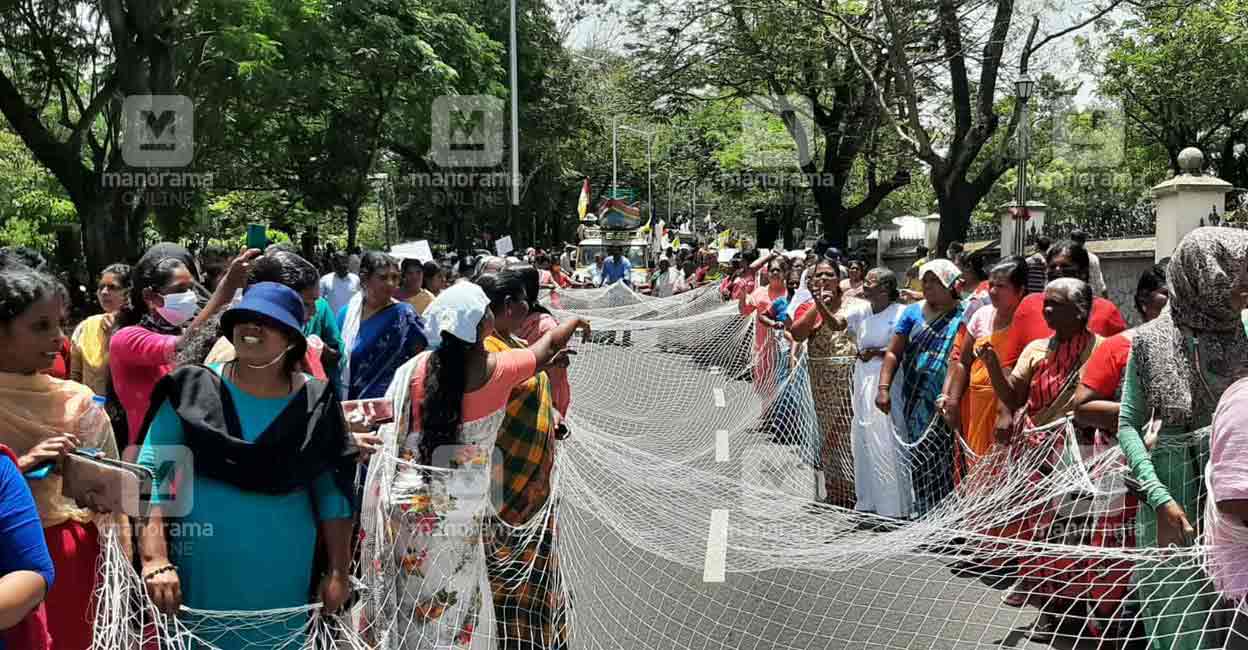Study says Adani port not responsible for coastal erosion in Thiruvananthapuram
.jpg?w=1120&h=583)
Mail This Article
A 'Draft White Paper' commissioned by the Vizhinjam International Seaport Limited (VISL) has found that the Vizhinjam port has only "minimal" impact on the moderate-to-high erosion along the Valiyathura to Shanghumugham stretch of the Thiruvananthapuram coast.
The 'White paper' - prepared jointly by National Centre for Earth Science Studies (NCESS), National Institute of Ocean Technology (NIOT), and Larsen and Toubro - has given four reasons why the port construction has negligible impact on erosion. One, the port falls within a concave "sediment sub-cell", Muttom – Kovalam, implying that the sediment movement is contained within the sub-cell. "Therefore, any intervention or change made within this sediment sub-cell will not make any significant change in the shoreline outside the sub-cell," the White paper notes.
Two, the port is located 13-15 kilometres away from the Valiyathura-Shanghumugham stretch. The paper notes that there are published reports that the extent of impact of any human intervention - breakwater or groyne or seawall or harbour - on a straight coastline will be only within 8 to 10 times the length of protrusion; since the breakwater protrudes just a kilometre into the sea, the maximum extent of impact would be 10 km. Valiyathura is 13 km from the port site and Shanghumughom even further.
Three, after the Ockhi cyclone in November 2017, Valliyathura and Shangumugham coasts were subjected to high wave activity due to an increase in the number of storm events and cyclones. Most of these storm events happened during the fair-weather period (October to April) when beach restoration normally happens.
Four, the presence of groynes in Poonthura and Beemappally, just one kilometre south of Valiyathura. These groynes obstruct the northerly longshore sediment transport to Valiyathura and Shanghumugham during the post-monsoon season, which is the normal beach building period.

The paper essentially argues that the erosion had been happening even before the commencement of port construction in 2015. Significantly, it does not compare the rate of erosion before construction and after. Even then it admits that things had worsened though only as a consequence of "unprecedented storm events".
"Two major storm events were reported since 2016 namely, Ockhi (2017) and Tauktae (2021) which had adversely affected the progress of work and also badly affected the stability of the Thiruvananthapuram coast in general," it says.
.jpg)
The draft paper will now have to be vetted by the Expert Committee and, if found satisfactory, will be submitted before the National Green Tribunal (NGT). The Expert Committee was formed by the NGT to monitor the shoreline changes in the project area —10 kilometres on either side.
Environmental activist A J Vijayan whose petition in the NGT has led to the creation of the Expert Committee, said that the draft paper was nothing but an attempt to favour the Adani Group. "The NGT had very clearly stated that if erosion was detected, the concessionarie had to bear the cost of the remedial action. If the report had adverse findings, it would have been an additional liability on the Adani Group," Vijayan said, hinting that the Group would have exerted its influence to draw up a favourable report.
Vijayan rejected the distance argument of the 'white paper'. He saw the erosion along Valiyathura and Shanghumugham as a kind of chain reaction. "After the work began, protective measures like sea walls were constructed along the beaches just north of the port site like Poonthura and Beemapally. This worsened erosion in areas further north like Valiyathura and Shanghumugham," Vijayan said.
Ironically, the paper reinforces Vijayan's argument. As one of the reasons for erosion along the Valiyathura-Shanghumugham stretch, it notes the construction of groynes at Beemapalli, which is just south of the erosion-prone stretch.
Further, Vijayan said that it was not his case that there was no erosion before port construction began or that natural disasters had not played a part. "My contention is that when nature struck in the form of Ockhi and Tauktae, the maximum damages were found in areas that were already facing erosion due to human intervention," he said.
Moreover, he said natural disasters played out uniformly across the Thiruvananthapuram coast. "Why did only Shanghumughom and Valiyathura suffer when beaches in Thumba, St Andrews and Puthukurichy could effectively withstand the sea surge," he said.

